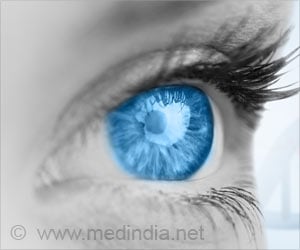A new study opens the door to novel explorations of using smartphones to detect and monitor potential neurological diseases earlier on.

It’s Time to Close Your Eyes
The application uses a near-infrared camera, which is built into newer smartphones for facial recognition, along with a regular selfie camera to track how a person’s pupil changes in size. These pupil measurements could be used to assess a person’s cognitive condition.‘A scalable smartphone assessment tool using pupil response tests aids in the detection and understanding of neurological diseases like Alzheimer’s disease.’





The technology is described in a paper that will be presented at the ACM Computer-Human Interaction Conference on Human Factors in Computing Systems (CHI 2022), which will take place from April 30 to May 5 in New Orleans.“While there is still a lot of work to be done, I am excited about the potential for using this technology to bring neurological screening out of clinical lab settings and into homes,” said Colin Barry, a PhD student at UC San Diego and the first author of the paper.
Recent research has shown that pupil size can provide information about a person’s neurological functions. Measuring the changes in pupil diameter is done by performing what’s called a pupil response test.
The test could offer a simple and easy way to diagnose and monitor various neurological diseases and disorders. However, it currently requires specialized and costly equipment, making it impractical to perform outside the lab or clinic.
To develop a more affordable and accessible solution, engineers in the Digital Health Lab collaborated with researchers at the UC San Diego Center for Mental Health Technology (MHTech Center) to develop an app that uses a smartphone’s near-infrared camera to detect a person’s pupil.
Advertisement
The app also uses a color picture taken by the smartphone’s selfie camera to capture the stereoscopic distance between the smartphone and the user. The app then uses this distance to convert the pupil size from the near-infrared image into millimeter units.
More User-Friendly Features
Researchers also included various features in their app to ensure that these solutions are ultimately usable for anyone. This includes individuals like older adults who might not be accustomed to using smartphones.They also worked with older adult participants to design a simple app interface that allows users to self-administer pupil response tests. This interface included voice commands, image-based instructions, and a cheap, plastic scope to direct the user to place their eye within the view of the smartphone camera.
The Digital Health Lab is continuing this work in a project to enable similar pupillometry functions on any smartphone rather than just the newer smartphones.
Future studies will also involve working with older adults to evaluate home use of the technology. The team will work with older individuals with mild cognitive impairment to test the app as a risk screening tool for early-stage Alzheimer’s disease.
Source-Medindia










